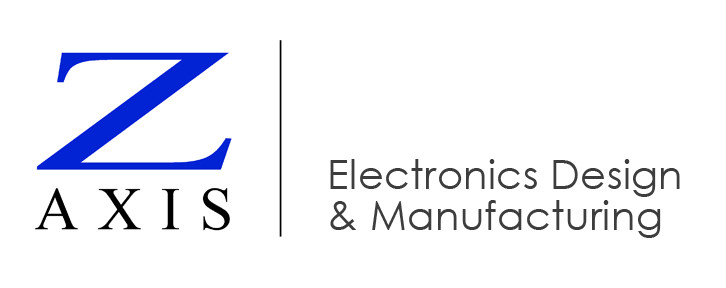Solder is a metal alloy that forms mechanical and electrical connections between components and printed circuit boards. It’s used with flux, a chemical that cleans surfaces and promotes wetting.
Z-AXIS uses solder that’s either leaded or lead-free. Leaded solder is 63% tin and 37% lead. It flows well and is used in military and aerospace products. Lead-free solder is a tin-silver-copper alloy. It doesn’t flow as well, but it’s safer for our employees and the environment.
Solder also comes in different forms. Some include flux. Others require us to add flux separately. At Z-AXIS, we use solder pastes, bar solder, wire solder with or without flux, and solder pre-forms.
Solder paste is a mixture of powdered metal and flux. We use a stencil and screen print the paste onto the boards. A camera aligns the PCB to the stencil, and a squeegee pushes the paste through the stencil’s holes. After pick and place, the board goes through a reflow oven where the solder is melted.
Bar solder uses wave soldering instead. Solid bars are loaded into a heated wave-solder pot. The flux is separate and sprayed onto the boards. There are two types of flux: no-clean and water wash. Both come in gallon jugs and are about 90% alcohol.
Wire solder with flux comes in one-pound spools. The core of the wire contains the flux, and the wires come in different diameters. There are two ways to apply wire solder: with a robot or by hand. We use our robot for repetitive jobs. Hand soldering is for parts that can’t take reflow temperatures, or if touchups are required.
Solder pre-forms come on tape and support pick-and-place assembly. We use them when extra solder is required. Pre-forms come in standard shapes such as washers. We use them to add more solder than the stencil places.
It’s interesting how solder and flux can be applied in so many different ways. Good solder joint formation is essential in electronics manufacturing, and Z-AXIS will use the best method for your application.
